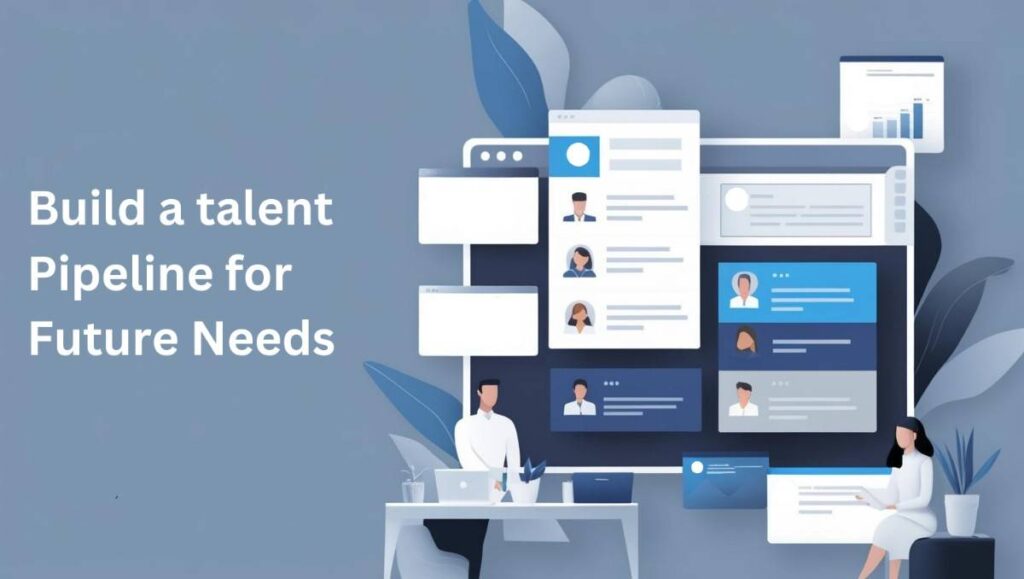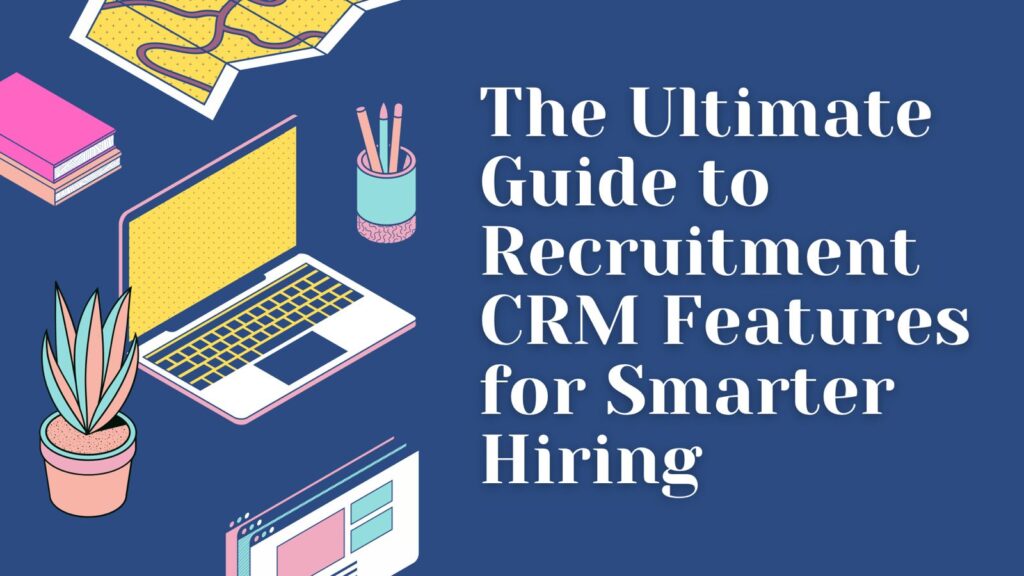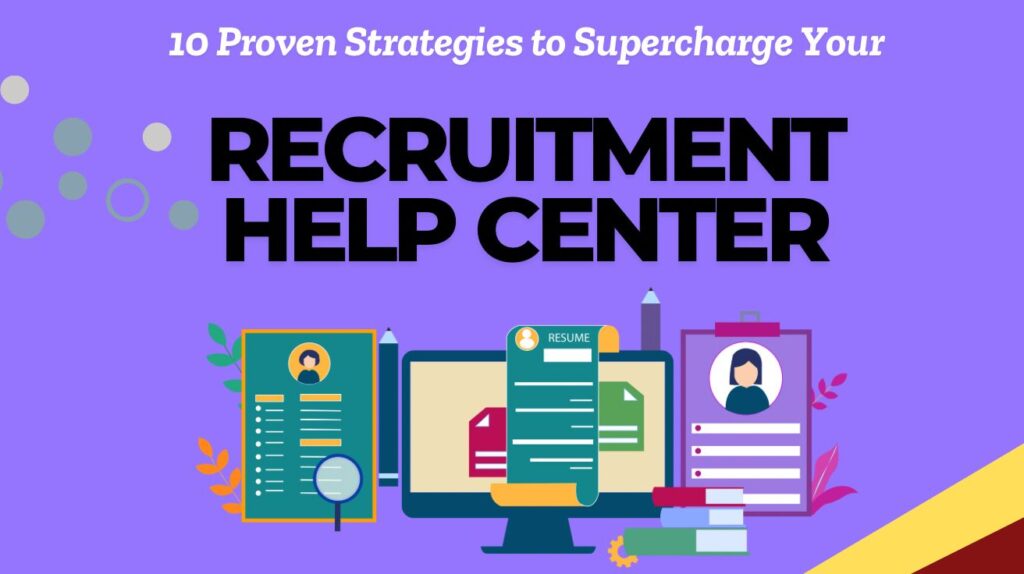Are You Struggling to Find Top Talent in a Competitive Job Market?
Candidate sourcing is no walk in the park. In today’s hyper-competitive hiring landscape, recruiters face the challenge of identifying, attracting, and engaging top talent—all while racing against time.For recruiters, adopting innovative strategies to identify, engage, and hire top-notch candidates is not just a goal but a necessity. But fear not! With the right strategies, you can transform your candidate sourcing process and build a talent pipeline that sets you apart from the competition.
In this blog, we’ll share 18 actionable tips to supercharge your candidate sourcing strategies and help you attract the best candidates for your organization and build a robust talent pipeline—all while keeping recruitment efficient and impactful.
Discover the ultimate guide to the 12 Best Recruitment CRM for Recruitment Agencies – Complete Guide designed to revolutionize hiring for recruitment agencies.
Let's first understand the impact and importance of candidate sourcing
Talent Pool vs. Talent Pipeline: Key Differences
A talent pool is an unfiltered collection of potential candidates, while a talent pipeline consists of vetted individuals ready for immediate consideration. A talent pool gathers contacts from sources like past applicants or career fairs. Once candidates are vetted and unqualified individuals removed, they transition into the talent pipeline, allowing recruiters to focus on ideal prospects more efficiently. Effective pipeline management involves engaging and nurturing these candidates for streamlined hiring.
Master ATS efficiency and streamline data management with these 11 powerful tips tailored for recruiters.
Why Candidate Sourcing Matters ?
Candidate sourcing is the proactive process of identifying and engaging potential candidates for current and future roles. It helps connect with passive and active candidates through strategies like employer branding. While only 36% of the workforce actively seeks new opportunities, 90% are open to learning about roles. Sourcing bridges this gap and ensures access to top talent who might otherwise remain unaware of your organization.
Discover the differences between Sourcing and Recruitment in our blog, Sourcing vs Recruitment: Key Differences
The Impact of Candidate Sourcing on Recruitment Outcomes
Research highlights the value of sourcing in recruitment. Sourced candidates are over twice as likely to be hired compared to those who apply independently. For example, one in 72 sourced candidates typically secures a position, whereas only one in 152 applicants achieves the same outcome. This statistic is even more impressive considering that sourced candidates may not initially express active interest in your company, unlike traditional applicants.
For more, read Candidate Sourcing’s Impact on Time-to-Fill and ROI
Here are the powerful tips to Supercharge Your Candidate Sourcing Strategies:
1. Align Sourcing Strategies with Hiring Managers
Collaboration with hiring managers is the foundation of effective candidate sourcing. Recruiters must engage in detailed discussions to understand the specific job requirements, skills, and experiences essential for success in a role.
For instance, technical positions may demand proficiency in particular programming languages or tools. By aligning sourcing strategies with these insights, recruiters can narrow their search to candidates who genuinely fit the role.
Pro Tip: Use tools like job analysis templates to ensure clarity and reduce miscommunication between recruiters and hiring managers.
2. Leverage Advanced ATS Features
Your Applicant Tracking System (ATS) is more than just a repository of resumes—it’s a treasure trove of untapped talent. Revisit your ATS to identify candidates who previously applied but weren’t selected. With new skills or updated experience, these candidates might now be ideal fits for open positions.
Modern ATS platforms also provide advanced filters to sort candidates by specific skills, certifications, or experience levels, making it easier to find the right talent.
Explore the Best AI-powered ATS to simplify your 2025 hiring process and find top talent effortlessly
3. Expand Your Sourcing Channels
Focusing exclusively on traditional job boards can restrict your access to a broader talent pool. Explore professional networking platforms like LinkedIn, niche communities, and industry-specific forums. For example:
- LinkedIn: Ideal for corporate and executive roles.
- GitHub: Perfect for sourcing developers.
- Dribbble: A go-to for creative professionals.
Expanding into these channels ensures access to diverse talent pools, enhancing the effectiveness of your candidate sourcing.
For more insights read , The Importance of Having Multiple Sourcing Channels When Recruiting Talent
4. Tap into Employee Referrals
Employee referrals are often overlooked but are one of the most reliable sources for finding qualified candidates. Establish a structured referral program with incentives to encourage employees to recommend skilled professionals from their networks.
Referred candidates not only fit into the company culture better but also have a higher retention rate, making this a win-win strategy.

5. Build a Talent Pipeline for Future Needs
A proactive approach to candidate sourcing involves planning for future hiring requirements. By building a talent pipeline, you can nurture relationships with potential candidates even before roles open up.
Use tools like ATZ CRM’s talent pool feature to organize and manage these candidates, ensuring you have a ready pool of skilled professionals when opportunities arise.
Pro Tip: Regularly engage with pipeline candidates through newsletters or networking events to keep them interested.
6. Personalize Your Outreach
Gone are the days of generic cold emails. Candidates expect tailored communication that reflects their unique skills and career aspirations. When reaching out, mention specific details from their profiles or past work, and explain why your company is a good match for their goals.
Personalized outreach demonstrates genuine interest and significantly improves response rates.
7. Strengthen Employer Branding
A strong employer brand attracts top talent organically. Showcase your company culture, values, and growth opportunities through engaging content, such as employee testimonials, behind-the-scenes videos, and thought leadership blogs.
Promoting your brand consistently on your website, LinkedIn, and other social media platforms positions your organization as an employer of choice.
8. Leverage Boolean Search
Boolean search is a powerful technique for refining candidate searches on platforms like LinkedIn. Using operators such as AND, OR, and NOT, you can pinpoint professionals with specific skills, experience, or locations.
For example:
- Search Query: (“software developer” OR “programmer”) AND “JavaScript” AND NOT “intern”
Mastering Boolean search saves time and improves the accuracy of your candidate sourcing.
9. Revisit Passive Candidates
Passive candidates may not be actively job hunting, but they’re often open to the right opportunity. Reconnect with individuals who previously expressed interest in your organization or engaged with your content online.
A compelling value proposition—such as a unique project or growth opportunity—can motivate passive candidates to consider a move.
10. Organize Virtual Networking Events
Virtual events, such as webinars, panel discussions, or online meetups, offer a dual advantage: positioning your company as a thought leader and connecting with potential candidates in real time.
These events can be industry-focused, targeting professionals with specific expertise, or more general, showcasing your organization’s culture and vision.
11. Use Recruitment Analytics
Tracking the performance of your candidate sourcing strategies is essential for continuous improvement. Metrics such as time-to-hire, source-to-hire, and candidate drop-off rates offer insights into what’s working and where adjustments are needed.
Using recruitment analytics ensures your resources are allocated effectively, maximizing ROI.
Uncover how data analytics is transforming recruitment by enabling smarter decisions and streamlined hiring processes: The Role of Data Analytics in Recruitment.
12. Harness the Power of Alumni Networks
Alumni networks are an often-underutilized resource in candidate sourcing. These networks provide access to professionals who have a proven connection to shared academic or organizational experiences. Reaching out through alumni groups can help you identify high-potential candidates who may be open to opportunities.
Actionable Tips:
- Collaborate with alumni associations to promote job openings.
- Use LinkedIn’s alumni feature to filter potential candidates by industry, location, or specific skill sets.
- Engage alumni by participating in reunions, webinars, or networking events to build long-term relationships.
Leveraging alumni networks not only taps into a talent pool that shares common values but also strengthens your employer branding within these communities.
13. Highlight Remote Work Opportunities
Remote work has transitioned from a perk to a pivotal factor in candidate sourcing. Offering flexibility not only broadens your talent pool but also caters to the growing demand for work-life balance. By explicitly highlighting remote work options in your job descriptions, you appeal to professionals who prioritize flexibility.
For instance, mention specific policies, such as hybrid schedules or fully remote roles, within the job posting. Clear details on technology support for remote workers also add credibility to your commitment. Providing these options makes your company more appealing, especially to candidates seeking flexibility.

14. Leverage AI and Automation
Artificial intelligence (AI) has transformed candidate sourcing by automating repetitive tasks and enhancing precision. AI-powered tools can analyze resumes, job descriptions, and candidate profiles to identify the best matches efficiently.
Consider integrating AI tools for:
- Job-to-candidate matching: Aligning candidate skills and experience with job requirements for precise recommendations.
- Resume parsing: Streamlining shortlisting by extracting and organizing key data.
- Call log transcription: Transcribing and analyzing recruitment calls to improve decision-making.
- GPT-powered integrations: Generating tailored job descriptions and candidate summaries.
These advancements reduce time-to-hire, optimize workflows, and let recruiters focus on building stronger candidate relationships.
Related Read: AI-Driven Recruitment: A New World of Talent Acquisition.
15. Partner with Educational Institutions
Building relationships with colleges and universities is a long-term strategy for enhancing candidate sourcing. Internship programs, job fairs, and campus recruitment drives connect you with emerging talent and create a pipeline for future hiring needs.
Additionally, collaborating with academic institutions on projects, workshops, or training initiatives allows your organization to engage directly with students. This proactive approach showcases your commitment to fostering new talent, strengthening your employer brand.
16. Keep Candidate Experience a Priority
The candidate experience can make or break your sourcing efforts. An efficient and respectful recruitment process encourages candidates to choose your organization and recommend it to their network.
To enhance candidate experience:
- Keep communication transparent and timely.
- Provide regular updates about application status.
- Personalize interactions during the interview process.
A positive experience not only boosts your employer brand but also increases the likelihood of attracting passive candidates through word-of-mouth referrals.
17. Monitor Competitor Strategies
Understanding competitor strategies is essential for staying ahead in candidate sourcing. Competitor analysis can reveal unique benefits, sourcing channels, or engagement methods that resonate with top candidates in your industry.
To monitor competitors effectively:
- Track their job postings and employer branding campaigns.
- Analyze their benefits packages and flexibility offerings.
- Leverage tools like LinkedIn to observe how they engage with talent.
This intelligence allows you to refine your strategies and remain competitive in sourcing the best candidates.
18. Utilize Recruitment CRMs
A robust recruitment CRM system is invaluable for managing candidate sourcing campaigns. Recruitment CRMs, such as ATZ CRM, provide tools for tracking applicants, nurturing relationships, and ensuring consistent communication.
Benefits of using recruitment CRMs include:
- Centralized candidate data for efficient management.
- Automated email campaigns to keep candidates engaged.
- Analytics to measure the effectiveness of sourcing efforts.
Investing in the right CRM streamlines recruitment processes and enhances the overall candidate sourcing strategy.
Read more in our Ultimate Guide: What is Recruitment Process Outsourcing (RPO).
Boost Your Recruitment Efforts
By integrating these strategies, you can supercharge your candidate sourcing efforts, ensuring that you’re not just finding candidates but attracting the best talent in the market.
Supercharge your recruitment strategies with advanced tools like ATZCRM with its cutting-edge features and intuitive design, ATZ CRM is your partner in revolutionizing recruitment.. By leveraging modern solutions, you can position your organization to attract and engage top talent effectively. Candidate sourcing, combined with robust candidate management, ensures your company stays competitive in today’s fast-paced workforce landscape.
👉 Book a demo with ATZ CRM to see how ATZ CRM can transform your talent acquisition strategy.
FAQs
- What is the difference between sourcing and recruitment?
Sourcing focuses on identifying and reaching out to potential candidates, while recruitment encompasses the end-to-end hiring process, from interviews to onboarding. - How does ATZ CRM enhance sourcing?
ATZ CRM offers tools to streamline candidate sourcing, manage talent pools, and track engagement, making your recruitment process more efficient. - What are the benefits of personalized outreach?
Personalized outreach increases response rates and demonstrates genuine interest, setting your company apart from competitors. - Can sourcing strategies help with long-term hiring goals?
Yes! Building talent pipelines and maintaining relationships with passive candidates can address both current and future hiring needs. - How can AI improve diversity hiring in recruitment?
AI can help reduce unconscious bias by focusing on skills, experience, and qualifications rather than demographic factors. AI-powered tools can anonymize candidate data, analyze job descriptions for inclusive language, and ensure fair shortlisting based on merit. This enables recruiters to build more diverse and inclusive teams.


